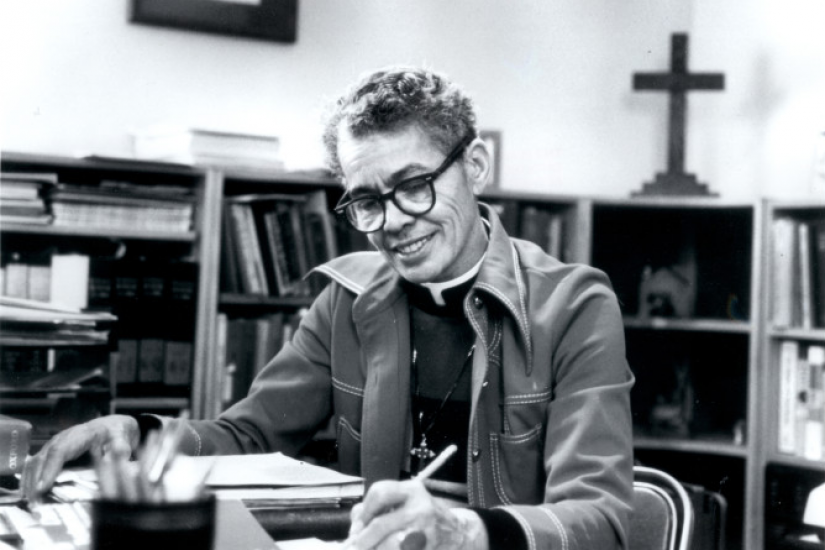Collins: One of the crucial aspects of your book is your discussion of Pauli Murray’s struggles with issues of identity. Can you tell us more about what you describe as her lifelong feelings of being “in-between”?
Rosenberg: Murray felt “in-between” in her race, gender, and class. Born to mixed-race parents in Baltimore, she was raised by her maternal grandparents and aunts in Durham, North Carolina. Pauli, who was darker than other members of her Durham family but lighter than the other children at the segregated school she attended, suffered the emotional whiplash of warnings at home to stay out of the sun to avoid looking “niggerish,” and tauntings at school for being too white, a “bastard.” This sense of color “in-betweeness” inspired her to attack racial boundaries as arbitrary.
From at least the age of eight, Murray also felt in-between in her gender. Identified as female at birth, Pauli believed that inside she was a boy. She insisted on wearing boys’ clothes, playing boys’ games, and doing boys’ chores. Fortunately, Pauli’s namesake, her Aunt Pauline, accepted Pauli’s in-betweenness. She called Pauli her “boy/girl.”
Murray also felt an in-between in her class. Her relatives included wealthy white planters and rich black businessmen, but she grew up in poverty, because her maternal grandfather, who had fought discrimination to serve in the Union Army and was wounded, gradually lost his sight and the ability to make a living. Her aunts’ salaries as teachers might have compensated for that loss, but the tightening grip of Jim Crow led to a sharp drop in black teachers’ salaries. Murray grew up knowing that she came from people who mattered, even if her immediate family was poor.
Collins: In the book you write about what Pauli Murray describes as her “confused world of uncertain boundaries” (2). Tell us about how you see this worldview as something that influenced her work throughout her life. Do you see this ethos aligning with what we now consider “intersectionality”?
Rosenberg: Murray spoke of her “confused world of uncertain boundaries” in the opening to her memoir Song in a Weary Throat. When I first read that book, I took her to be referring to racial boundaries and the boundary between the world of the living and the dead, especially the parents she lost as a young child. But as I came to know Murray better through her papers, I saw that “boundaries” referred also to gender. She always felt that the boundary between male and female was arbitrary, that everyone is male and female to differing degrees, and that some people (like her) might look female on the outside but be male on the inside.
